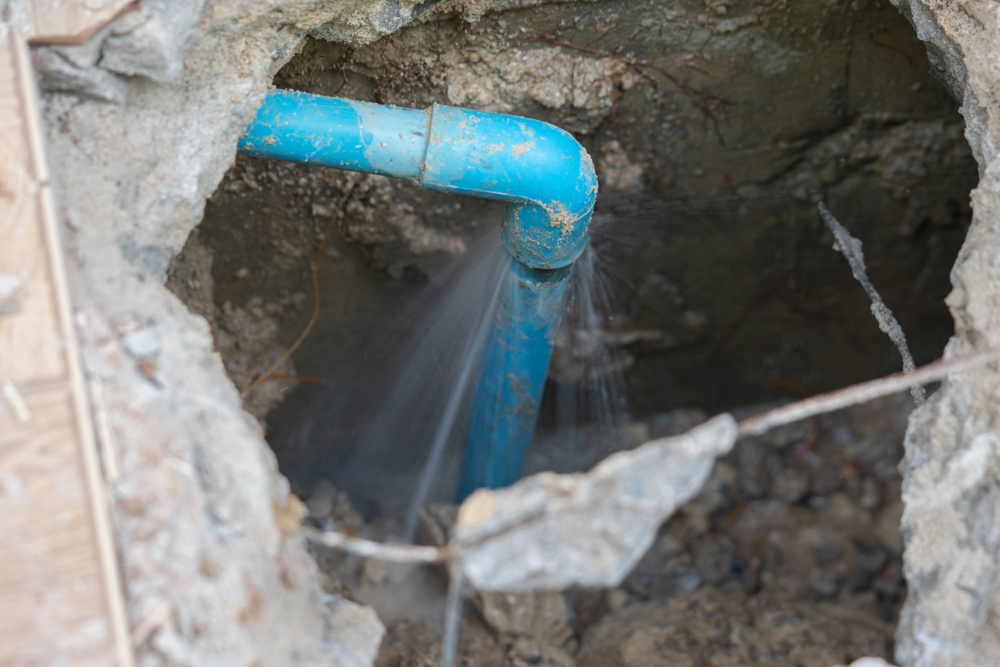Are you currently looking for resources concerning Detecting hidden plumbing leaks?

Early detection of leaking water lines can alleviate a prospective catastrophe. Some little water leaks may not be visible.
1. Check Out the Water Meter
Every home has a water meter. Inspecting it is a guaranteed way that assists you uncover leaks. For starters, shut off all the water sources. Make certain no person will certainly flush, utilize the tap, shower, run the cleaning machine or dishwashing machine. From there, most likely to the meter and watch if it will certainly transform. Given that nobody is using it, there should be no movements. That suggests a fast-moving leak if it moves. Similarly, if you discover no changes, wait an hour or more and also inspect back once again. This indicates you may have a sluggish leak that might even be underground.
2. Check Water Usage
Assess your water costs and also track your water consumption. As the one paying it, you ought to see if there are any type of discrepancies. If you identify sudden changes, despite your consumption being the same, it indicates that you have leakages in your plumbing system. Keep in mind, your water bill need to fall under the very same range every month. A sudden spike in your bill indicates a fast-moving leakage.
On the other hand, a consistent boost monthly, despite having the same habits, reveals you have a sluggish leak that's additionally slowly rising. Call a plumber to thoroughly check your home, especially if you feel a warm location on your flooring with piping beneath.
3. Do a Food Coloring Test
When it comes to water usage, 30% comes from commodes. If the shade somehow infiltrates your bowl throughout that time without flushing, there's a leak in between the storage tank as well as dish.
4. Asses Outside Lines
Do not fail to remember to inspect your outside water lines also. Test spigots by affixing a yard pipe. Must water leak out of the link, you have a loosened rubber gasket. Replace this as well as make certain all links are tight. If you have actually obtained a sprinkler system, it will certainly aid get it expertly took a look at as well as kept every year. One small leakage can lose tons of water and surge your water costs.
5. Check and Evaluate the Scenario
Homeowners should make it a practice to examine under the sink counters and even inside cupboards for any type of bad odor or mold development. These 2 red flags indicate a leak so prompt attention is required. Doing routine evaluations, even bi-annually, can save you from a major trouble.
Examine for stainings and also deteriorating as many devices as well as pipelines have a life span. If you presume leaking water lines in your plumbing system, don't wait for it to intensify.
Early discovery of dripping water lines can alleviate a possible catastrophe. Some tiny water leakages may not be noticeable. Inspecting it is a proven means that helps you find leaks. One little leak can lose lots of water and also surge your water costs.
If you think leaking water lines in your plumbing system, don't wait for it to intensify.
WARNING SIGNS OF WATER LEAKAGE BEHIND THE WALL
PERSISTENT MUSTY ODORS
As water slowly drips from a leaky pipe inside the wall, flooring and sheetrock stay damp and develop an odor similar to wet cardboard. It generates a musty smell that can help you find hidden leaks.
MOLD IN UNUSUAL AREAS
Mold usually grows in wet areas like kitchens, baths and laundry rooms. If you spot the stuff on walls or baseboards in other rooms of the house, it’s a good indicator of undetected water leaks.
STAINS THAT GROW
When mold thrives around a leaky pipe, it sometimes takes hold on the inside surface of the affected wall. A growing stain on otherwise clean sheetrock is often your sign of a hidden plumbing problem.
PEELING OR BUBBLING WALLPAPER / PAINT
This clue is easy to miss in rooms that don’t get much use. When you see wallpaper separating along seams or paint bubbling or flaking off the wall, blame sheetrock that stays wet because of an undetected leak.
BUCKLED CEILINGS AND STAINED FLOORS
If ceilings or floors in bathrooms, kitchens or laundry areas develop structural problems, don’t rule out constant damp inside the walls. Wet sheetrock can affect adjacent framing, flooring and ceilings.
https://www.servicemasterbyzaba.com/blog/how-to-detect-water-leakage-in-walls/

Do you really like reading up on Top leak detection hacks? Create feedback further down. We'd be interested to hear your insights about this blog entry. Hoping that you come back again in the near future. For those who enjoyed our post kindly remember to pass it around. Thank you so much for your time spent reading it.
Book